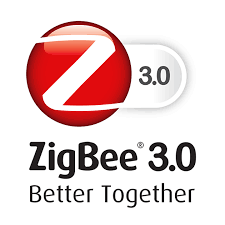(Editor’s Note: This article, translated from ZigBee Resource Guide. )
Announced in late 2014, th upcoming ZigBee 3.0 specification should be largely complete by the end of this year.
One of the primary goals of ZigBee 3.0 is to improve interoperability and minimize confusion by consolidating the ZigBee applications library, removing redundant profiles and streaming the whole. Over the course of 12 years of standards work, the application library has become one of ZigBee’s most valuable assets – and something that is conspcuously missing in less manture competing standards. However, after years of piece-by-piece organic growth, the library needs to be re-evaluated in its entirety with the goal of making interoperability a natural outcome rather than an intentional afterthought. This much-needed reassessment of the application profile library will further strengthen this critical asset and address weakness that have invited criticism in the past.
Renewing and reinvigorating this assesst is esspecially important now, as the chasm between application frameworks and the networking layer becomes more apperant, especially for mesh networks. A robust consolidated application library intended for resource-constrained nodes will become even more valuable as Qualcomm, Google, Apple, Intel and others begin to realize that Wi-Fi is not appropriate for every application.
The other major technical change in ZigBee 3.0 is the addition of Green Power. Previously an optional feature, Green Power will be standard in ZigBee 3.0, enabling extreme power savings for energy harvesting devices, such as light switched that use the physical motion of the switch to generate the power needed to transimit ZigBee packet on the network. Green Power enables these devices to use only 1 percent of the power normally used by a ZigBee devices by creating proxy nodes, usually line powered, that act on behalf of the Green Power node. Green Power will further strengthen ZigBee’s ability to address applications in lighting and building automation, in particular. These markets have already begun to use energy harvesting in light switches, occupancy sensor, and other devices to reduce maintance, enable fexible room layouts, and avoid the use of expensive, heavy-guage copper cable for applications where only low-power signaling is necessary, not high current carrying capacity. Up until the introduction of Green Power, the Enocean wireless protocol was the only wireless technology designed for energy harvesting applications. Adding Green Power t the ZigBee 3.0 specification allows ZigBee to add further value to its already compelling value proposition in lighting, in particular.
While the technical changes in ZigBee 3.0 are substantial, the new specification will also come with a markting rollout, new certification, new branding, and a new go-to-market strategy- a muh-needed fresh start for a mature technology. The ZigBee Alliance has said that it is targeting the International Consumer Electrinics Show(CES) in 2015 for the public unveiling of ZigBee 3.0.
Post time: Aug-23-2021
